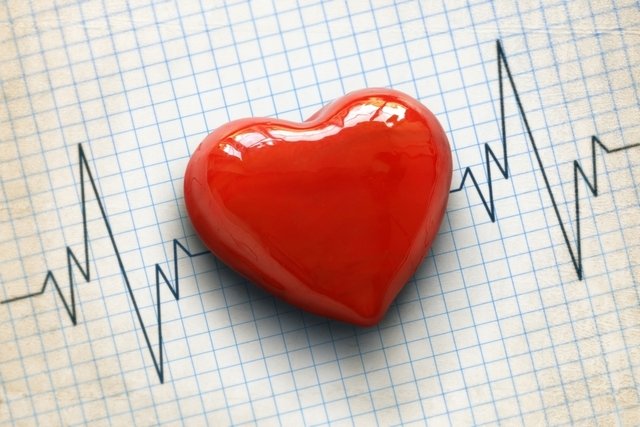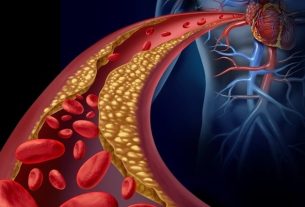Total cholesterol should always be below 190 mg/dL. Having high total cholesterol does not always mean that the person is sick, as it can occur due to an increase in good cholesterol (HDL), which also increases total cholesterol values.
Therefore, one must always take into account the values of HDL cholesterol (good), LDL cholesterol (bad) and triglycerides to analyze a person’s risk of developing cardiovascular diseases.
The symptoms of high cholesterol only appear when its values are very high. Therefore, after the age of 20, it is recommended to carry out blood tests for cholesterol at least every 5 years in healthy individuals and, at least once a year, for those already diagnosed with high cholesterol, those with diabetes or who is pregnant, for example.
Read too: Cholesterol: what it is, types, values (and how to lower it)

How is done
The cholesterol test is carried out by analyzing a blood sample that is collected and sent to the laboratory. The exam can be carried out fasting for 8 to 12 hours or without fasting, and it is important to inform the laboratory so that this can be taken into account at the time of the evaluation.
Furthermore, it is recommended to avoid drinking alcoholic beverages in the 3 days before the blood test and avoiding intense physical activities such as running or prolonged training in the previous 24 hours.
In the two weeks before the test, it is important to continue eating normally without dieting or overeating, so that the result reflects your real cholesterol levels.
Cholesterol calculator
Enter the results of your cholesterol test into the calculator below and see if everything is ok:
Exam reference values
The cholesterol test reference values may vary according to the fraction of cholesterol assessed and the person’s age:
1. Table of reference values for cholesterol
Check out the table below for the desirable cholesterol reference values, according to age, by the Brazilian Cardiology Society:
* Cardiovascular risk is calculated by the doctor during the consultation, and takes into account the person’s risk factors for developing cardiovascular disease, such as advanced age, smoking, presence of high blood pressure, diabetes, kidney disease or other heart diseases, for example .
2. Table of reference values for triglycerides
The table of normal triglyceride values, by age, recommended by the Brazilian Cardiology Society are:
Triglycerides are another type of fat in the body, used as an energy reserve by the body, and when they are high they also increase the risk of atherosclerosis deposits in the blood vessels and increase the risk of cardiovascular diseases. See more about triglycerides.
3. Cholesterol values during pregnancy
During pregnancy, cholesterol reference values have not yet been established, so pregnant women should rely on reference values for healthy adults, but always with medical supervision.
During pregnancy, cholesterol levels are normally high, especially in the second and third semesters. Women who have gestational diabetes should pay extra attention, as their cholesterol levels tend to rise even higher. See how to lower high cholesterol during pregnancy.
Bibliography
- JUNG, E.; et al. Serum Cholesterol Levels and Risk of Cardiovascular Death: A Systematic Review and a Dose-Response Meta-Analysis of Prospective Cohort Studies. Int J Environ Res Public Health. 19. 14; 8272, 2022
- PEDRO-BOTET, J.; PINTÓ, X. LDL-cholesterol: The lower the better. Clin Investig Arterioscler. Suppl 2. 16-27, 2019
- IBRAHIM, MA; ASUKA, E.; JIALAL, I. IN: STATPEARLS (INTERNET). TREASURE ISLAND (FL): STATPEARLS PUBLISHING. Hypercholesterolemia. 2023. Available at: <https://www.ncbi.nlm.nih.gov/books/NBK459188/>. Accessed on Aug 4, 2023
- IZAR, MCO; et al. Update of the Brazilian Family Hypercholesterolemia Guideline – 2021. Arq Bras Cardiol. 117. 4; 782–844, 2021
- BRAZILIAN SOCIETY OF CARDIOLOGY. Update of the Brazilian Guideline on Dyslipidemia and Prevention of Atherosclerosis. 2017. Available at: <http://publicacoes.cardiol.br/2014/diretrizes/2017/02_DIRETRIZ_DE_DISLIPIDEMIAS.pdf>. Accessed on Aug 4, 2023
- LEE, Y.; SIDDIQUI, W. J. IN: STATPEARLS (INTERNET). TREASURE ISLAND (FL): STATPEARLS PUBLISHING. Cholesterol Levels. 2022. Available at: <https://www.ncbi.nlm.nih.gov/books/NBK542294/>. Accessed on Aug 4, 2023
- BALLING, M.; et al. VLDL Cholesterol Accounts for One-Half of the Risk of Myocardial Infarction Associated With apoB-Containing Lipoproteins. J Am Coll Cardiol. 76. 23; 2725-2735, 2020
- CORDOVA, Caio Mauricio M.; PORTAL, Ariane S.; CORDOVA, Maurício. Martin, Friedewald and Cordova formulas compared with direct LDL-C measurement in southern Brazil. J Bras Pathol Med Lab. Vol 56. 1-6, 2020
- BRAZILIAN SOCIETY OF CARDIOLOGY. Update of the Brazilian Guideline on Dyslipidemia and Prevention of Atherosclerosis. 2017. Available at: <https://www.scielo.br/pdf/abc/v109n2s1/0066-782X-abc-109-02-s1-0001.pdf>. Accessed on September 15, 2020

Sign up for our newsletter and stay up to date with exclusive news
that can transform your routine!
Warning: Undefined array key "title" in /home/storelat/public_html/wp-content/plugins/link-whisper-premium/templates/frontend/related-posts.php on line 12
Warning: Undefined array key "title_tag" in /home/storelat/public_html/wp-content/plugins/link-whisper-premium/templates/frontend/related-posts.php on line 13




